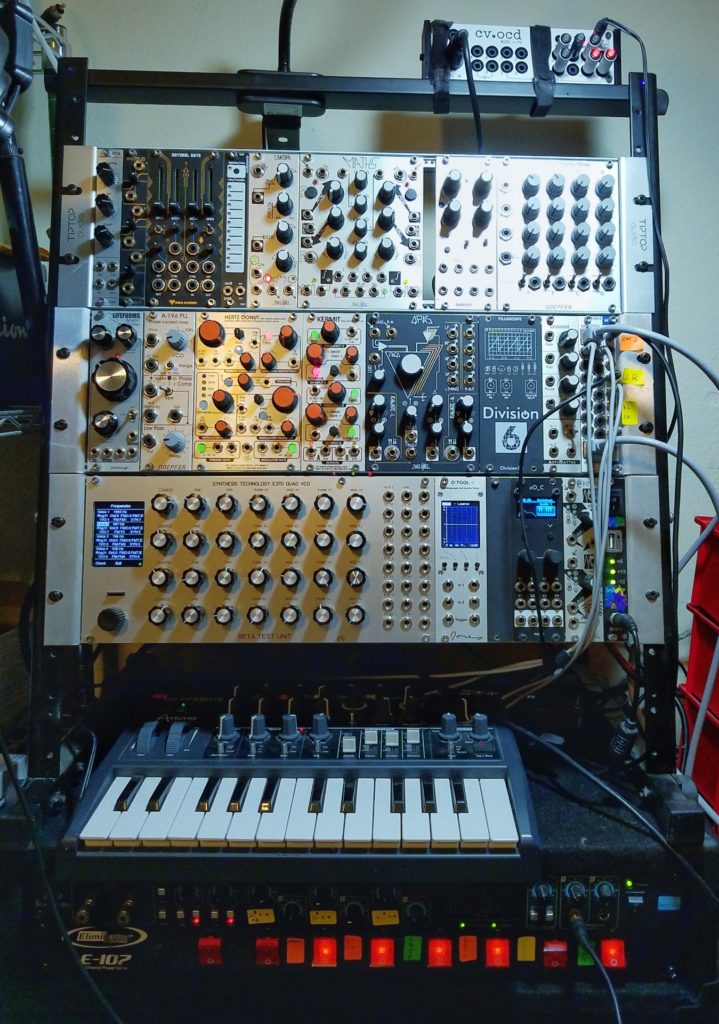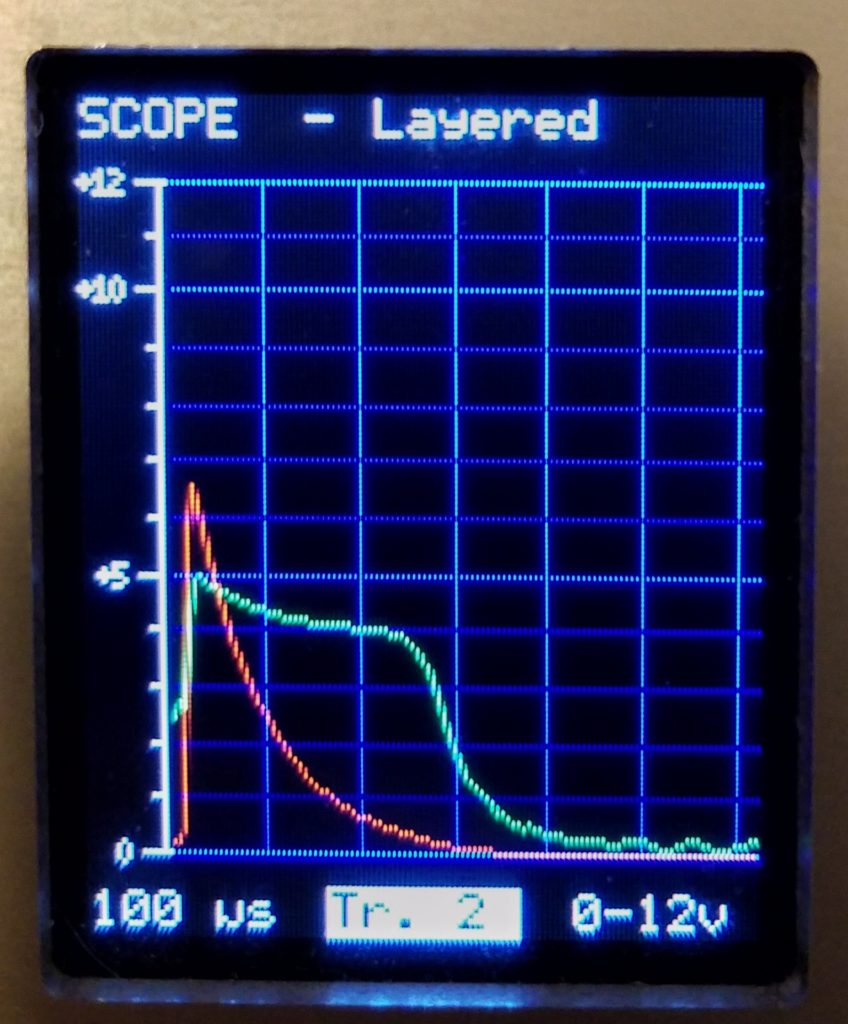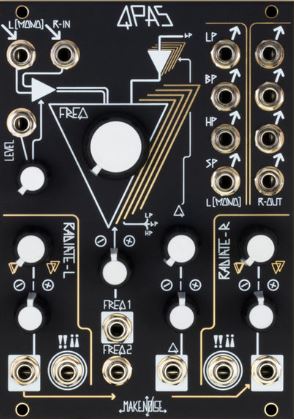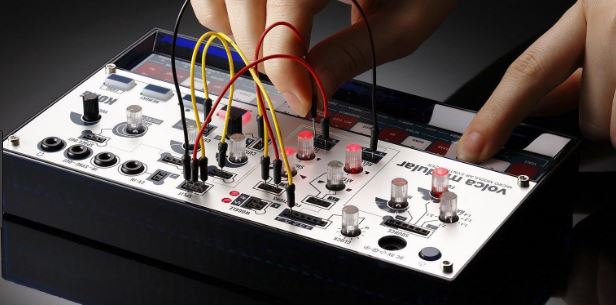The National Association of Music Merchants (NAMM) has a big yearly trade show this time of year. Not every player in the synthesizer end of the instrument business attends — the thing has a reputation of being dominated by guitars, with a smattering of other traditional Western instruments, and it’s huge and loud and expensive, maybe not the best venue to show off more complex instruments or communicate their subtleties. There are more synth-friendly events throughout the year that are closer-knit and make more sense.
But for those who don’t go — like Moog Music or Make Noise — it’s still pretty common to announce and/or release new products at around this time. So the blogs and forums are a flurry of activity and it’s hard even for fans to keep up with all the videos, writeups, and discussion.
The one “YES I MUST HAVE THAT” item for me is Make Noise QPAS, Quad Peak Animation System — a fancy filter that I’ve decided will replace my Twinpeak and also, why not, my Cinnamon because I basically never use two filters in a recording and I’m going to have the ER-301 to do virtual filters anyway. There were intriguing teasers on social media that we speculated on, and then a short video demo, and then a livestreamed demonstration and talk by the designer Tony Rolando (who, through a combination of astute interviews and cool gear inventions, has sort of become one of my synth heroes*). So that’s pre-ordered.
Another likely one was announced a little early: the Korg Volca Modular, a miniscule but genuinely semi-modular, West Coast style synth that is either going to confuse a lot of people or win a lot of converts to the Way of Buchla (possibly both). Its existence makes me confident I can let go of my Double Helix with little pain.
A few other bits of gear have sparked brief passing interest and mild curiosity. A couple of them, I’m skeptical of and need audio and video demos to prove themselves to me. A couple of them seem very nice but not something I particularly need (the Moog Sirin “analog messenger of joy” for instance).
And then there’s the Arturia MicroFreak. Nearly everything about it makes me sad and screams “out of touch marketing” louder than any sound the instrument can make. The name is bad, the ad copy is bad, the video is painful; the graphic design is bad, the sound is… either kind of bland or the demos are extremely bland. What makes it notable, other than its weird looks and (kind of cool) touchplate keyboard, is the claim that they “collaborated” with Mutable Instruments.
According to Émilie (who is Mutable Instruments): they used some of her (open-source) code from the Plaits module, with both implicit and explicit permission. They invited her to one awkward “focus group”-like meeting after the instrument design was already finished, but she never had the chance to even playtest it, nor even see a photo of it until a week ago. But they slapped her logo and company name on the website and claimed it was a collaboration, and now people think the thing has her endorsement and participation.
UPDATE: Arturia apologized and changed their website. Instead of claiming collaboration it’s now “we’ve also integrated the open-source Plaits oscillator developed by Eurorack legends Mutable Instruments.” Much less misleading.
Also, as more demos come in, the sound might have more promise than it initially seemed. I may keep an eye on it because the keyboard controller frankly intrigues me.
Until Émilie posted a call outlining it in more detail and asking people not to be an angry mob, there was a bit of fan backlash. During that interval I contemplated alternatives to my Microbrute. Something very compact that offers MIDI control, immediate playability and tweakability and good sound — there aren’t too many options within the physical dimensions available really.
There’s a particular range of technique and sound I really love about the Microbrute — the interaction of its triangle oscillator output and its saturation and filter feedback — but if I can replicate that with other gear I have or which is easily available, I could let it go. Now that things are calmer, I’m thinking about that in terms of opportunity rather than boycott. If I can make those sounds with some combination of my modular and software, I could have more control over the subtleties. If I could use a more compact and/or alternative controller, that’s a plus too. But I don’t have to choose that just because of some bonehead marketing committee at Arturia.
Anyway: with the first day of the show over, so is most of the internet excitement. Now the focus is on waiting for clarification and demos of specific interesting gear, and mostly just getting on with our lives.
As I’d planned, I’ve been keeping track of money spent and recovered from gear sales — and also projecting ahead on planned purchases and sales. I’m currently a little in the red thanks to that pre-order, but overall, this plan has me unspending money. I am getting to be on a first name basis with Kevin at the local post office, who now knows I trade “studio equipment.” I may run out of boxes to ship things in, but I’ll get back to the idea of a relatively lean-and-mean but powerful synth setup like I’d planned in 2017, but which ran ahead of me for a bit.
(*) I could rant about “heroes” but I’ll keep it brief: I don’t really have “heroes” but people I admire for particular specific qualities while fervently hoping they’re not an animal abuser, bigot, rapist, supporter of vile causes, or a willing or unwitting pawn in a Russian intelligence operation. You know what a “real hero” is? A meta-concept from fiction and mythology. But in terms of people I have that cautious admiration for: a handful each of instrument designers, musicians, writers, artists and activists.











